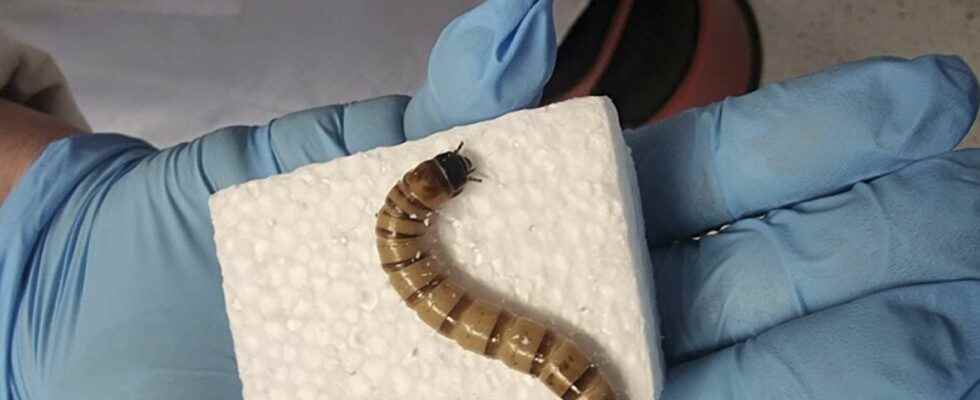While microplastics have been identified in the blood, the lungs and they have even been found at the top of Everest, this news could provide a lead on how to biodegrade our plastic waste, a real scourge on our planet. The solution may well come from a bacterial enzyme nestled in the gut microbiome of these superworms.
You will also be interested
Packaging material, disposable cutlery, boxes of CD : the polystyrene is one of the forms of plastic the most common, but its recycling is not easy and the vast majority end up in landfills or the oceans, threatening marine life. Scientists have discovered that “super worms”, guzzling the substance, could be of great help.
It is thanks to their intestinal enzymes that these larvae of the beetles Zophobas morio could hold the key to a rate of recycling higher, according to researchers from Australia’s University of Queensland. Chris Rinkewho led a study published Thursday in the journal Microbial Genomicstold AFP that previous research had shown that the tiny wax and flour worms (which are also larvae beetles) had a good history in matter consumption of plastic.
” So we hypothesized that much larger superworms could eat even more “, he added. Super worms grow up to five centimeters and are bred as a food source for reptiles and birds, or even for humans in countries like Thailand and Mexico. Rinke and his team subjected the superworms to different types of diets for three weeks. Some received polystyrene, others sound, still others nothing.
In search of the enzymes involved
” We confirmed that super worms could survive on a polystyrene diet alone, and even gain some weight — compared to a starvation control group — suggesting that the worms may gainenergy eating polystyrene “, he said. Although the polystyrene-raised superworms completed their life cycle, becoming nymphs and then fully grown adult beetles, testing revealed a loss of microbial diversity in their guts and pathogens. pathogens potentials.
These results suggest that while insects can survive on polystyrene, it is not a nutritious diet and it impacts their health. Next step, the team used a technique called the metagenomics to analyze the microbial community of the gut and find out which enzymes coded by Genoa were involved in the degradation of plastic.
Styrofoam munching super worms. © University of Queensland
Towards mini-recycling plants?
One way to use the results would be to provide superworms with waste food or agricultural bioproducts to be consumed with polystyrene. “ This could be a way to improve worm health and cope with the large amount of food waste in western countries “, according to Mr. Rinke.
But if it’s possible to breed more worms for this purpose, he envisions another path: to create recycling factories that would mimic what the larvae do, which is to first shred the plastic and then dispose. ” Ultimately, we want to remove the super worms from theequationexplained the researcher who now plans more research aimed at finding the most effective enzymes and then further improving them through engineering. enzymatic.
Interested in what you just read?
